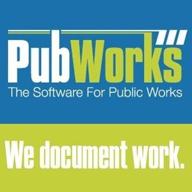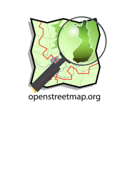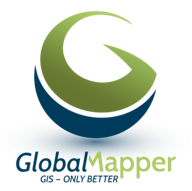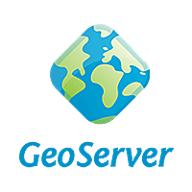GIS Software
The Power of GIS Software: Transforming Environmental Impact Assessment, Urban Planning, and Community Mapping
GIS software has revolutionized various fields by providing powerful tools and insights for analyzing spatial data. From assessing environmental impacts to planning urban areas and facilitating community mapping, GIS software has become an indispensable asset for professionals and businesses alike. In this article, we explore how GIS software is driving innovation in these areas and discuss some of the best solutions available.
Environmental Impact Assessment Made Efficient and Effective
Environmental impact assessment (EIA) plays a vital role in evaluating the potential consequences of human activities on the environment. GIS software has emerged as a game-changer in this domain by enabling professionals to collect, analyze, and visualize spatial data related to ecosystems, land use, and natural resources. With sophisticated tools and algorithms, GIS software empowers environmental consultants and researchers to make informed decisions, identify potential risks, and propose mitigation strategies, ultimately leading to more sustainable development.
Open-Source GIS Software: Empowering Communities Through Mapping
In the realm of community mapping, open-source GIS software has emerged as a powerful tool for citizen engagement and empowerment. By providing accessible and user-friendly mapping platforms, communities can actively participate in data collection, visualization, and analysis. Open-source GIS software allows community members to map their neighborhoods, highlight local issues, and collaborate on finding solutions. This democratization of GIS technology fosters community resilience, enhances public participation, and promotes inclusive decision-making processes.
Driving Urban Planning with the Best GIS Software
Urban planning requires a holistic approach that considers factors such as land use, transportation, infrastructure, and environmental sustainability. GIS software has become an essential component in this process, enabling urban planners to make data-driven decisions and create comprehensive plans. The best GIS software for urban planning offers advanced spatial analysis tools, visualization capabilities, and integration with CAD and PLM systems. By leveraging GIS software, urban planners can optimize urban growth, improve transportation networks, and create livable, sustainable cities.
CAD and PLM Integration: Unlocking Enhanced Functionality
Integrating Computer-Aided Design (CAD) and Product Lifecycle Management (PLM) systems with GIS software brings a new level of efficiency and functionality to various industries. This integration allows seamless data exchange between CAD, PLM, and GIS platforms, enabling professionals to harness the power of spatial data in their design, manufacturing, and maintenance processes. Whether it's optimizing factory layouts, analyzing the spatial impact of product design changes, or managing complex supply chains, the integration of CAD and PLM with GIS software streamlines workflows and improves decision-making across the board.
Empowering Small Businesses with Affordable GIS Software
In the past, GIS software was often associated with hefty price tags, limiting its accessibility to large organizations. However, with the emergence of affordable GIS software solutions, small businesses can now leverage the power of spatial data analytics without breaking the bank. These cost-effective GIS software options provide essential mapping and analysis capabilities, allowing small businesses to make informed decisions, identify market trends, optimize logistics, and improve customer targeting. With affordable GIS software, businesses of all sizes can gain a competitive edge and unlock new growth opportunities.
Embracing the Third Dimension: GIS Software with 3D Modeling Capabilities
Traditional two-dimensional maps provide valuable information, but sometimes a three-dimensional perspective is required for a more comprehensive understanding of spatial data. GIS software with 3D modeling capabilities allows professionals to visualize and analyze data in three dimensions, bringing a new level of depth and insight to various applications. Whether it's visualizing terrain, analyzing building heights, or simulating urban development scenarios, GIS software with 3D modeling capabilities enables professionals to explore spatial data from all angles, uncover hidden patterns, and make more informed decisions.
GIS software has emerged as a transformative technology, revolutionizing environmental impact assessment, urban planning, and community mapping. With its wide range of applications and powerful features, GIS software has become an essential tool for professionals and organizations across different sectors. Whether you're a planner, environmental consultant, or a small business owner, embracing GIS software can unlock new opportunities, enhance decision-making, and drive positive change in your field.


1 Review
Citymapper is building the best app (http://citymapper.com/apps), with the best routing, and the best data in the cities where we can make a difference.


1 Review
The built-in GIS functions of the MapViewer allow you to instantly map any and all appropriate data held in PubWorks.


1 Review
With iMapBuilder you can create interactive HTML5 maps or images, and custom Google Maps without coding.


1 Review
ArcFM, based on the industry-leading Esri ArcGIS platform, consists of a family of configurable models and a set of sophisticated tools designed to provide a highly efficient asset management solution for energy and water/wastewater utilities.



1 Review
GRASS is an open-source GIS package that provides tools and programs that can be sued for data management, image processing, graphic production, spatial modelling, and visualization of GIS data.


1 Review
It is easy to work in a variety of formats with gvSIG Desktop, vector and raster files, databases and remote services. There are always available all kinds of tools to analyze and manage your geographic information.


1 Review
Locus Dispatcher is an automated route planner that uses deep machine learning to simplify the distribution of goods for delivery agents, drivers, and dispatchers. It is a comprehensive solution in logistics that enhances fulfillment operations and increases consistency in transport planning, with nearly no human intervention. The cloud-based tool also…
Read more about this company

1 Review
Map Maker Pro is if for people that need to make maps. It is not an atlas or simply a map viewing program. It is for people that need to add information to maps or create new maps.


1 Review
PostGIS is a spatial database extender for PostgreSQL object-relational database. It adds support for geographic objects allowing location queries to be run in SQL. In addition to basic location awareness, PostGIS offers many features rarely found in other competing spatial databases such as Oracle Locator/Spatial and SQL Server.


1 Review
BatchGeo is the easiest way to get your list of addresses on a map. Since 2006 BatchGeo has hosted millions of maps for Fortune 50 companies, non-profits, and individuals. The idea behind BatchGeo is most geographic data is stored in some sort of spreadsheet, list, or simple table (ex: Excel, CSV, Google Spreadsheets, etc.) So its optimized for those…
Read more about this company

1 Review
QGIS is a open source GIS tool that provides capabilities and tools to help you visualize, manage, edit, analyze data and compose printable maps.


1 Review
Scribble Maps is an easy to use online GIS/Mapping platform that has a very low learning curve to help you make better decisions. Upload spreadsheets, filter data, geocode, route optimize, create annotations, collaborate, measure distances, create interactive maps, visualize and more! Our team portal lets teams collaborate and work together on maps and…
Read more about this company

1 Review
The TerrSet system incorporates the IDRISI GIS Analysis and IDRISI Image Processing tools along with a constellation of vertical applications.


1 Review
SAGA is the abbreviation for System for Automated Geoscientific Analyses. SAGA provides an easily approachable user interface with many visualisation options.


1 Review
Manifold System is a single, integrated product that provides three major classes of GIS functionality in a single package: as a desktop application, as an objects library for programmers and as an Internet Map Server for web applications (all versions except Personal Edition include IMS).


1 Review
5Maps is a powerful mapping tool that generates business insights quickly and efficiently using Google Maps technology.


1 Review
Global Mapper is an affordable and easy-to-use GIS application that offers access to an unparalleled variety of spatial datasets and provides just the right level of functionality to satisfy both experienced GIS professionals and beginning users.


1 Review
Designed for interoperability, GeoServer publishes data from any major spatial data source using open standards. GeoServer implements industry standard OGC protocols such as Web Feature Service (WFS), Web Map Service (WMS), and Web Coverage Service (WCS). Additional formats and publication options are available as extensions including Web Processing…
Read more about this company

1 Review
MapBusinessOnline provides the easiest, most affordable business mapping software any large or small enterprise will ever require. Access advanced sales territory mapping, customer location visualizations, multi-stop optimized routing with time windows, market analysis with multiple drive time queries, large format printing, and a variety of ways to…
Read more about this company- GIS software, or Geographic Information System software, is a tool used to capture, store, analyze, manage, and present spatial or geographic data. It allows users to visualize, interpret, and understand patterns, relationships, and trends in data related to specific locations on the Earth's surface.
- GIS software has a wide range of applications across various industries. It is used in urban planning, environmental impact assessment, natural resource management, transportation planning, emergency management, geology, archaeology, forestry, and many other fields where spatial data analysis and visualization are crucial.
- GIS software works by combining different types of data, including maps, satellite imagery, aerial photographs, and tabular data, into a common spatial framework. It allows users to overlay and analyze these different data layers, perform spatial queries, create custom maps, and generate reports and visualizations based on the analyzed data.
- When evaluating GIS software, it is important to consider features such as data import and export capabilities, spatial analysis tools, data visualization options (2D and 3D), support for different data formats, database management, ease of use, and compatibility with other software systems such as CAD and PLM.

